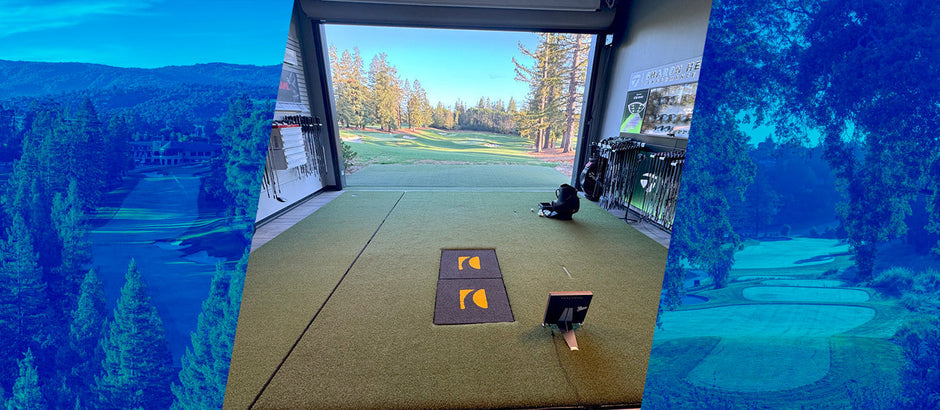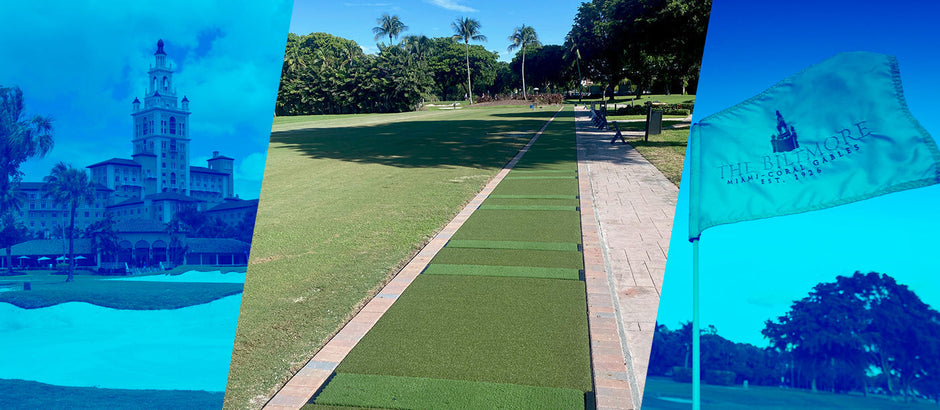One of the top questions we see on golf forums is “How do I avoid joint pain when I’m practicing?” Unfortunately, it’s quite common for people to sustain injuries while practicing regularly on ranges or at home.

There's a variety of reasons you could be hurting your joints while practicing golf:
- Technique - While even the best players can sustain injuries, it is often players with inferior technique who get hurt practicing golf. Incorrect setup and body alignment, poor sequencing and steep downswings frequently lead to the club slamming into the ground at impact, and wrists, elbows, shoulders and backs tend to bear the brunt of improper twisting and impact. Do it over and over, and your body is really going to feel it.
- Improper Warmup - We often rush to the first tee or get to the range and immediately start with full speed swings. Without properly warming up our muscles and creating some flexibility in our bodies to accommodate the strong torque we create in our golf swings, this can have an immediate, unwanted impact.
- Exacerbating Existing Injuries or Mobility Issues - When our bodies are not 100%, putting more physical stress on them can be extremely tough on us. When we already have injuries or inadequate flexibility, the kind of torque we create with the golf swing can often make things far worse, which can result in limiting our activity in the short term or even have a more debilitating long-term impact.
- Hitting On a Hard Surface - Repeated golf practice naturally puts some stress on your body, but when it's on a relatively unforgiving hitting surface--and especially when you combine it with any of the three factors above--the result can be quite painful. This is often the experience when hitting on lower quality artificial turf mats and tee lines, which tend to be constructed with low pile and often sit directly on cement or other hard surfaces. These hitting surfaces cause “turf shock” that can especially plague golfers who practice frequently. The feeling is like “hitting on green painted concrete”, which can wreak havoc on your joints—wrists, elbows, shoulders, back, even your fingers. (Not only do these mats hurt your joints, but they ultimately change how you swing, because you become hesitant to hit the ground. And no one wants to groove a flinchy swing. They also keep you from knowing if you’re impacting the ball correctly because of the “mat effect,” wherein the club bounces into the ball and can create the appearance of good contact despite a poor swing.)
To address the causes of joint pain identified above, there are specific things you can do to for each:
- Get Help from a PGA Professional - The most effective way to improve your swing technique and body mechanics is by getting feedback and guidance from a qualified teacher. And while you can find plenty of golf instruction content online, don't make that your sole source of instruction, because you only get information on what you think your issues are, rather than what an experienced PGA professional can observe in your unique swing. In-person lessons are the best way to have your specific technique assessed and adjusted for the greatest improvements to your game and your body mechanics, which will help to avoid pain-inducing swing faults.
- Warm Up Properly - While we're all busy and anxious to start swinging, it's well worth it to get your body fully prepared for the forces you're going to apply to it when practicing or playing golf. Take the time to stretch, make easy and dynamic movements to get the muscles and joints warmed up, and take some rhythmical practice swings so you're not jumping right into full speed swings. And if you can start by hitting balls smoothly (feel like 50% effort), you'll find that you not only will warm up your body well and help avoid injury, but that you'll groove good tempo (and ball contact) to start your practice session or your round.
- Rest and Heal Injuries - If you have some injury or mobility issues, don't think that "playing hurt" makes you a hero. The forces on your body created by the golf swing are significant, so don't feel like you need to push it if you're already in pain. You can take a little time off and employ the R.I.C.E. method--rest, ice, compression and elevation--to get your joints to a more playable state. (And maybe if you just spend some time chipping and putting instead of on full swings, you'll find you end up scoring better!)
- Practice on a Quality Hitting Surface - Perhaps the quickest way to make a positive difference for your joints is to start practicing on a hitting surface that is appropriately forgiving and feels great at impact. The gold standard for injury prevention in golf mats is the Fiberbuilt Grass Series, a collection created specifically to avoid joint pain while maximizing performance. The ultra-durable Fiberbuilt Grass hitting surface uses a bristle construction that allows you to hit down into the turf as the clubhead slides through, avoiding any jarring impact or joint pain.

This construction has also been launch monitor tested to prove that it accurately simulates hitting on real fairway grass, so it's great for simulator setups and home practice.
What kinds of hitting mats are available with Fiberbuilt Grass?
The performance and injury prevention benefits of the Fiberbuilt Grass Series can be experienced with its wide variety of golf hitting mats:
|
|
Premium mats with Fiberbuilt Grass hitting strips and Performance Turf spacers for ball trays or launch monitors. Available in single-, center- and double-hitting configurations. |
|
Combines a premium Fiberbuilt Grass hitting mat with a true-roll putting green, including real metal cups. Available in center- and double-hitting configurations. |
 |
 |
Fiberbuilt's original hitting mats with hitting strips, seen on ranges and in teaching studios worldwide. Available in single- and double-hitting configurations.
|
|
Small-footprint mats with Fiberbuilt Grass hitting strips and hourglass-shaped stance turf that set up and break down quickly and easily. Available in single- and double-hitting configurations.
|
 |
 |
The ultimate teaching mat with an oval Fiberbuilt Grass hitting surface and rubber stance surface with integrated training elements.
|
You can contact Fiberbuilt’s customer service via email or at (833) 328-3218 for guidance on what type of Fiberbuilt Grass hitting mat and configuration will be best for you.









